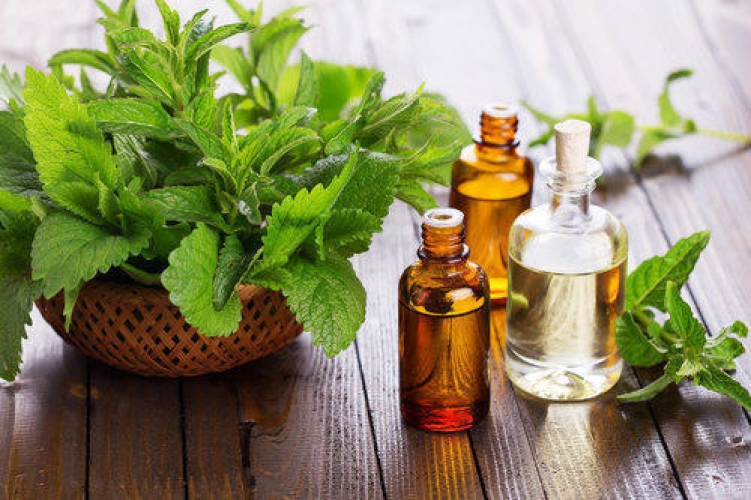The Comprehensive Guide to Spearmint Oil: Benefits, Uses, and Precautions
Spearmint oil, derived from the spearmint plant (Mentha spicata), has been a staple in traditional medicine and culinary practices for centuries. Known for its sweet, minty aroma and numerous health benefits, spearmint oil is a versatile essential oil used in aromatherapy, skincare, and even household cleaning. This article delves into the properties, benefits, and various uses of spearmint oil, providing a comprehensive understanding of this remarkable essential oil.
What is Spearmint Oil?
Spearmint oil is extracted through steam distillation from the leaves and flowering tops of the spearmint plant. It contains active compounds like carvone, limonene, and menthol, which contribute to its therapeutic properties. Unlike peppermint oil, which has a high menthol content, spearmint oil is milder, making it suitable for use with children and those sensitive to stronger mint oils.

Health Benefits of Spearmint Oil
-
Digestive Health Spearmint oil is well-known for its ability to support digestive health. It helps in relieving symptoms of indigestion, nausea, and bloating. The antispasmodic properties of spearmint oil can help relax the muscles in the gastrointestinal tract, making it effective for easing stomach cramps and gas.
-
Respiratory Support The decongestant properties of spearmint oil make it a natural remedy for respiratory issues. Inhaling spearmint oil can help clear nasal passages, relieve sinus congestion, and soothe a sore throat. Its antimicrobial properties also make it effective in combating respiratory infections.
-
Hormonal Balance Spearmint oil has been shown to have anti-androgenic properties, which can be beneficial for women suffering from hormonal imbalances such as polycystic ovary syndrome (PCOS). Regular use of spearmint oil, either through inhalation or topical application, may help reduce excess facial hair growth and improve hormonal balance.
-
Antioxidant Properties Rich in antioxidants, spearmint oil helps combat oxidative stress, which can lead to premature aging and chronic diseases. Incorporating spearmint oil into your skincare routine can help protect your skin from environmental damage and promote a youthful appearance.
-
Cognitive Function The refreshing aroma of spearmint oil is known to enhance mental clarity and improve concentration. Inhaling spearmint oil can help reduce mental fatigue, improve focus, and boost overall cognitive function, making it an excellent oil for students and professionals alike.
-
Pain Relief Spearmint oil's analgesic properties make it an effective natural remedy for pain relief. It can be used to alleviate headaches, muscle aches, and joint pain. When applied topically, spearmint oil can help soothe sore muscles and reduce inflammation.
Uses of Spearmint Oil
-
Aromatherapy Spearmint oil is widely used in aromatherapy for its uplifting and calming effects. Diffusing spearmint oil in your home can help reduce stress, alleviate anxiety, and create a refreshing atmosphere. It blends well with other essential oils like lavender, eucalyptus, and rosemary, enhancing its therapeutic effects.
-
Skincare Due to its antimicrobial and antioxidant properties, spearmint oil is a great addition to your skincare routine. It can help clear acne, reduce inflammation, and soothe irritated skin. You can add a few drops of spearmint oil to your cleanser or moisturizer to enhance its effectiveness.
-
Oral Care Spearmint oil is a popular ingredient in toothpaste and mouthwashes due to its ability to freshen breath and promote oral health. Its antibacterial properties help combat bad breath, reduce plaque, and prevent gum infections. You can create your own natural mouthwash by adding a few drops of spearmint oil to water and rinsing your mouth with it.
-
Household Cleaning Spearmint oil's antiseptic properties make it an excellent natural cleaner. You can use it to disinfect surfaces, clean kitchen countertops, and eliminate odors in your home. Mixing spearmint oil with water and vinegar creates a powerful, eco-friendly cleaning solution.
-
Hair Care Spearmint oil can be beneficial for maintaining healthy hair and scalp. Its stimulating properties can help improve blood circulation to the scalp, promoting hair growth and reducing dandruff. Adding a few drops of spearmint oil to your shampoo or conditioner can leave your hair smelling fresh and feeling revitalized.
-
Cooking Spearmint oil can be used as a flavoring agent in cooking and baking. Its sweet, minty flavor adds a refreshing twist to salads, desserts, and beverages. However, it's important to use food-grade spearmint oil and only a small amount, as essential oils are highly concentrated.
How to Use Spearmint Oil Safely
While spearmint oil is generally safe for use, it's important to follow certain precautions to avoid adverse reactions:
-
Dilution: Always dilute spearmint oil with a carrier oil (such as coconut or jojoba oil) before applying it to the skin. This helps prevent irritation, especially for those with sensitive skin.
-
Patch Test: Before using spearmint oil topically, perform a patch test by applying a small amount of the diluted oil to a small area of skin. If no irritation occurs after 24 hours, it is safe to use.
-
Internal Use: Only use food-grade spearmint oil for internal consumption and in very small quantities. Consult with a healthcare professional before ingesting essential oils, especially if you are pregnant, nursing, or have underlying health conditions.
-
Children and Pets: Spearmint oil is milder than peppermint oil, but it should still be used with caution around children and pets. Ensure the oil is properly diluted and avoid direct contact with their skin or eyes.
-
Storage: Store spearmint oil in a cool, dark place, away from direct sunlight and heat. Proper storage helps maintain the oil's potency and extends its shelf life.
Comments
Post a Comment